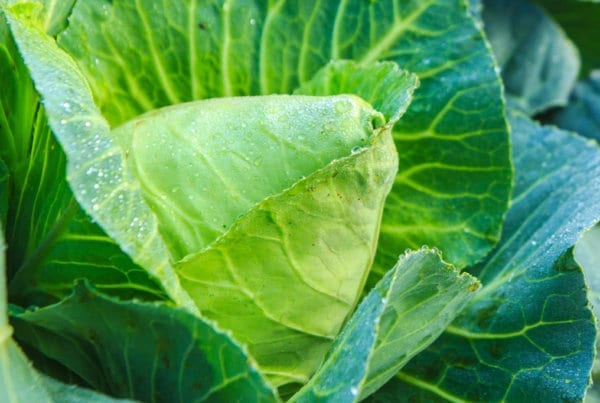Charleston Wakefield Cabbage is an heirloom variety that’s been a longtime favorite of gardeners since its introduction in 1892. This open-pollinated cabbage variety produces conical heads that average 6-8″ long and 4-5 pounds. Charleston Wakefield is very heat-tolerant and is especially adapted to the warmer growing conditions of the south. Crisp heads may be prepared raw or cooked. This is a great variety for fermenting and making homemade sauerkraut, but it is also excellent when cooked and used in soups.
Cabbage will grow best in areas where weeds are kept to a minimum. Cabbage is moderately frost-tolerant and performs better when planted in cooler weather. Cabbage will tend to bolt in warmer temperatures. Plant cabbage early in spring for a late spring/early summer harvest, or plant in late summer/early fall for a fall harvest. Cabbage are heavy feeders and require a considerable amount of nitrogen for larger heads. For best results, inject or soil drench with a balanced fertilizer at least once every two weeks. If smaller heads are desired, less fertilizer will be adequate.
Charleston Wakefield Cabbage may be direct-seeded or transplanted, although we suggest transplanting. Transplanting allows for more consistent plant spacing and prevents seedlings from competing with weeds in the early stages of the plant. We recommend starting transplants 3-4 weeks before the desired outdoor planting date. Charleston Wakefield transplants grow great in our heavy-duty seed starting trays, where they develop a solid root ball with roots that are trained to grow downward. Plants are ready to go in the ground when they can be easily pulled from the cells in the seed starting tray.
Charleston Wakefield Cabbage Planting Information
Planting Method: direct seed or transplant
When to Plant: early spring and fall
Planting Depth: 1/4″
Seed Spacing: 12″
Row Spacing: 2-3′
Days to Maturity: 75
Disease Resistance: None


